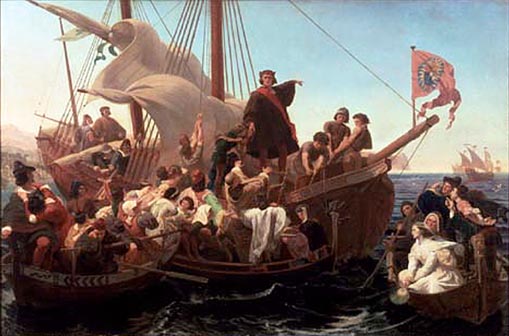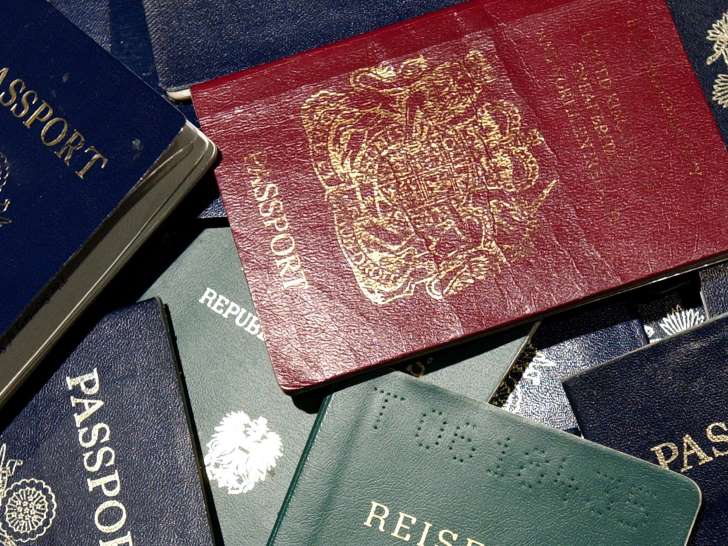
Man’s inquisitive nature often propelled him to leave the comforts of life behind and venture out to discover something that have had existed around-unnoticed.
On High Seas
In the past, he took to the seas and oceans for this and by cruising through rough weathers and unfamiliar routes, he discovered countries and continents.
For example, Christopher Columbus, a maritime explorer, left Spain to find a sea route to India by sailing westward. Thanks to his directional blunder, he didn’t reach there, instead a New World (the Americas) was discovered. Interestingly, Columbus never admitted that he had reached a place other than India he had set out for and called the inhabitants of the lands he visited indios (Spanish for “Indians”).
Later, the first to make for India through the sea was Vasco da Gama, the Portuguese navigator who linked the lands of Europe and Asia through waters of Atlantic and the Indian Ocean.
Similarly, Captain Cook was the British explorer, navigator and cartographer who by sailing through the unfamiliar sea routes, first mapped lands from Australia, New Zealand to Hawaii in the Pacific Ocean.
Evidently their indomitable spirit pushed dare devils ahead to challenge hazards of high seas to know the unknown.
On Top of the World
Again man’s urge to put his foot on the top of world made India’s sherpa, Tenzing Norgay, and New Zealander, Edmund Hillary, to conquer the Mount Everest for the first time in May 1953.
At an altitude of more than twenty-nine thousand feet, Mount Everest came to be known as the highest peak in the world and was considered unclimbable, because compressed air gas and other gadgetry supports that modern mountaineers carry along were non-existent then. Nevertheless, before Hillary and Tenzing scaled the summit, two other expeditions got quite close to the peak. Famous among them was the pair of George Mallory and Andrew Irvine who in 1924 were seen quite near the peak but unfortunately they never returned to tell their story.
On reaching Everest, Hillary and Tenzing shook hands, hugged each other at man’s triumph and stayed on top of world for 15 minutes only because of their low air supply. They took photographs and Tenzing placed a food offering. Together, they looked around for any signs of climbers before them, who probably never returned. They didn’t find any.
Finding Earth’s Axle points
Human curiosity knows no bound and he tried to locate the two points of axle around which our planet earth spins. If north end was located in ice-covered Arctic region, south was buried down in Antarctica, a more difficult terrain, where no humans had ever lived permanently.
Let it be known that geographic North-South Poles are not the same what the magnetic needle shows up on the compass dial. The magnetic poles, unlike Axial Poles, continue to shift their positions. That way earth has a pair each of North and South Poles.
Interestingly, books, movies and television shows display the North Pole as the fictional home of Santa Claus, whereas it is the real place located by scientist in the middle of the Arctic Ocean. In 1937, Russia (former Soviet Union) due to the shifting ice, constructed drifting platforms to mark the location of the North Pole. This is the one spot on the planet from where every other point is to the south.
South Pole, on the other hand, sits atop a “featureless, windswept, icy plateau of continent Antarctica at an altitude of 2835 meters (9306 ft) above sea level. The geographic South Pole is marked by a small sign in the ice pack, which is repositioned each year on New Year’s Day to compensate for the movement of the ice. If the North Polar region has some countries and variety of flora and fauna around it, South Pole is barren with exception of limited number of living species. No human being had ever lived permanently in Antarctica, though research centres of some countries located here are staffed with shifting manpower.
Conflicting interests
After discovery and colonization of new lands, man derived material benefits by exploiting human and natural resources of those places. Powerful industrial nations of Europe got abundant raw material for their factories and marketed their finished goods there at huge profits. That greed triggered conflicts among colonial powers who besides many armed skirmishes, fought two World Wars among them to capture more colonies.
History may repeat itself in North Pole because the countries like Canada, Norway, Denmark (Greenland), Russia and the United States have claimed sovereignty over this frigid region, primarily for two reasons. First, the sea bed of North Pole has an enormous stock of untapped fossil fuel, gas, minerals and diamonds. And second, the melting Arctic ice due to climate change would give way to new shorter routes for worldwide trading. The economy of the region would get major boost and these nations like earlier colonial powers would try to establish their hold over this region rich in oil, fish, diamonds and also establish control shipping routes in the region.
But these aren’t medieval times and under international law, North Pole and the Arctic Ocean surrounding it, are not owned by any one country. The Arctic countries, as per an agreement, have limited jurisdiction over sea waters, beyond that are high sea or international waters to be administered by the UN International Seabed Authority. However, this cold region may generate some heat among these countries in the days to come.
The story of the South Pole is not different, even when no country claims sovereignty over this uninhabitable region yet some may have their eyes on Antarctica’s minerals, fossil fuel stocks to be exploited in future.
In the end
After having exhausted earth’s resources recklessly, man has understood limitations of more availability in future and now looks up in the sky, not in awe of its infinity but to find some viable place for him to live and exploit it besides planet Earth. He has sent animals, men, women and machines to outer space to probe such potentials and made their landings possible on moon and Mars to learn more about these rocks. Man intends to set up villages on the Moon by the year 2030. Astronauts and robots would be working together on lunar surface to achieve the target. But that isn’t the end. Moon villages would be mere platforms for launching his missions to Mars and other destinations.
Welcoming such endeavors, we wish man would learn more to live in peace, amity and friendship on planet Earth, the most beautiful one known so far in our universe!


 South Asian News E-Paper
South Asian News E-Paper Punjabi News E-Paper
Punjabi News E-Paper

















